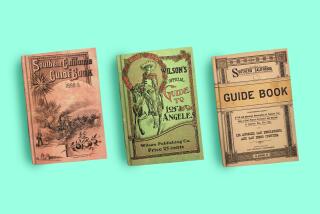P.D. Smith sets off on an urban exploration
- Share via
It’s clear to anyone who tries to get from Santa Monica to downtown at rush hour that our cities are crowded with people. Take the 10 Freeway, or try Sunset, cut down to Beverly, then Olympic, then Pico — every route is jam-packed. This is a relatively new phenomenon — not traffic but urbanization. Two hundred years ago, just 3% of us lived in cities. Now, more than half the world’s population does; that’s expected to rise to 75% by 2050.
In “City: A Guidebook for the Urban Age” (Bloomsbury: 400 pp., $40), P.D. Smith looks back and forward, at how cities have evolved, how they work, what they mean and where they’re going. The book begins with the Aztecs’ Tenochtitlán — now Mexico City — at the moment it is first encountered by Spanish explorers in 1519. Smith deftly integrates the narratives of far-flung places across centuries. Discussing sports within city bounds, he draws a connection between the Roman Colosseum and skateboarders in Venice Beach.
In this continuum, he creates an uber-city, a grand portrait of what urbanity is and might become. Some tidbits from the book:
— When the Spaniards arrived, Tenochtitlán had a population of 200,000 — larger than any city in Spain.
— Banksy is nothing new. Pompeii, which was destroyed in AD 79, was covered with graffiti: “I am amazed that you haven’t fallen down, O wall / Loaded as you are with all this scrawl,” reads a surviving note. It wasn’t all so clever, though; there was also: “Atimetus got me pregnant.”
— Contemporary Mumbai (population 19 million) displays some of the most extreme income gaps of any city in the world; while rich areas boast luxurious real estate on par with midtown Manhattan, in the Dharavi slum, families of 12 or more often live together in less than 90 square feet, smaller than a parking space.
— The conversion of Los Angeles’ downtown buildings to stylish apartments has served as a model for other cities; part of the draw for residents is avoiding the average 100 hours per year many Angelenos spend waiting in traffic.
More to Read
Sign up for our Book Club newsletter
Get the latest news, events and more from the Los Angeles Times Book Club, and help us get L.A. reading and talking.
You may occasionally receive promotional content from the Los Angeles Times.










